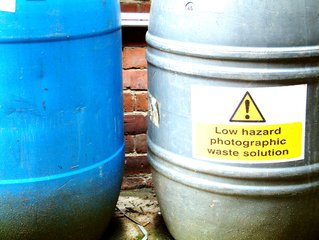EPA Publishes 2019 Hazardous Waste Figures

- Over 581,000 tonnes of hazardous waste was generated in Ireland in 2019, an increase of 55,000 tonnes (10%) since 2018.
- Hazardous waste generation in Ireland has been increasing since 2015, driven mainly by increases in incinerator ash and contaminated soils.
- Ireland remains heavily reliant on export for treating the hazardous waste produced in the State. Overall 65% of our hazardous waste was exported for treatment to other EU member states in 2019.
The Environmental Protection Agency (EPA) has today published its latest hazardous waste figures for Ireland. Hazardous waste includes ash produced by waste to energy facilities, contaminated soils and chemicals.
The amount of hazardous waste produced in Ireland continues to increase. Ireland produced 581,000 tonnes of hazardous waste in 2019, an increase of 55,000 tonnes (10%) since 2018. Hazardous waste generation in Ireland has been increasing since 2015, driven mainly by increases in incinerator ash and contaminated soils.
While treatment capacity in Ireland has increased for some waste types, such as contaminated soils, Ireland still does not have the range of facilities to deal with all of the hazardous waste generated in the country. Overall 65% of Ireland’s hazardous waste was exported for treatment to other EU member states in 2019. The Netherlands, Norway, Great Britain, Denmark, Germany, Northern Ireland and France together accepted the majority of Ireland’s hazardous waste exports.
Commenting on the figures, EPA Programme Manager Mary Frances Rochford stated: “It is clear that Ireland has made some progress in terms of increased treatment of some hazardous waste types, due to increased capacity provided in 2019. However, we still have a way to go to become self-sufficient in the management of this waste stream. The Covid-19 pandemic has shown the importance of adequate and resilient waste treatment capacity. This will be a key focus as the EPA prepares the next National Hazardous Waste Management Plan due to be published in 2021.”
Industry and the construction sector continue to be the largest generator of hazardous waste, giving rise to large quantities of incinerator ash (152,000 tonnes), contaminated soils from remediation of industrial sites (91,000 tonnes) and chemical residues (66,000 tonnes). Households, farms and other businesses also produce a range of hazardous wastes such as batteries, waste electrical and electronic appliances, paints, solvents and medicines.
Infectious health care waste was the eleventh largest category of hazardous waste in 2019 at just over 12,000 tonnes. The effect of the Covid-19 pandemic is likely to result in higher tonnages in 2020.
The EPA compiles data on waste generation from industry and waste facilities in cooperation with the National Trans Frontier Shipment Office.
The 2019 information is available on the EPA website HERE.

Leave a Reply